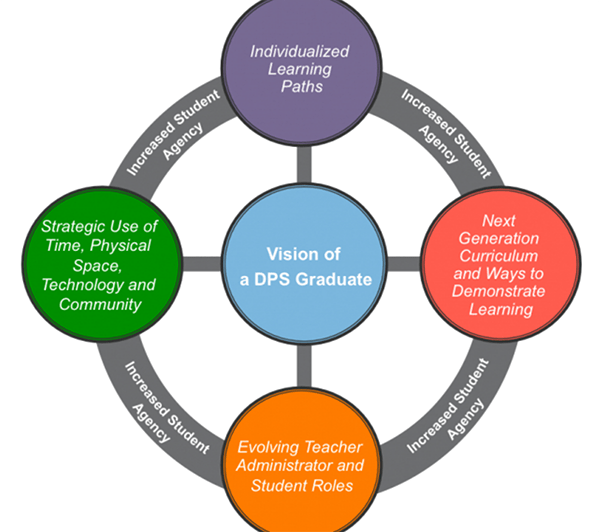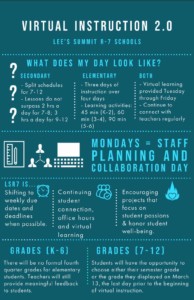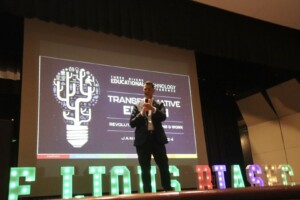Two Strategies for Empowering Teacher Leaders

This blog is part two in a four part series–sponsored by Pearson Education–focused around the key indicators of success in a digital learning program. The first post focused on shared vision for student outcomes.
We inherited schools that don’t make much sense. They are the sedimentary result of years of local, state and federal policies; lots of bonds and budgets; and the residue of fads and fickle political leadership. History yields a distinctive incoherent system.
Coherence is key to quality. In a coherent system, everything works together for students and teachers: content, learning experiences, assessment, professional development, schedule, structure, staffing and supports. Coherence makes good work easier, improves learner experience and teacher satisfaction.
There are two ways to create coherence. The first is an enterprise approach—everybody across the system doing the same thing using the same systems. The other approach is a portfolio of schools, each with a unique model and customized supports.
A Coherent Enterprise
In the old days (aka 1995-2005) efforts to create coherence was called managed instruction (or managed curriculum). It started with standards and included common lessons, pacing guides and benchmark assessments. The approach stifled and scripted teachers. It worked pretty well for kids in the middle, not so well for students above or below grade level (i.e., most of them). We told teachers to differentiate but didn’t give them tools to do so.
We’re now in the process of inventing systems that personalize learning for all students. Blended environments help but the components still don’t work together as well as they should. It’s complicated work and many districts have delegated–really capitulated–leadership to the school level hoping they will figure out how to leverage technology to reach higher standards.
Mooresville Graded School District has been a leader in taking a systemic approach–common goals, a collaborative culture, and shared practices, tools and systems. This sort of enterprise approach usually feels top-down but superintendent Mark Edwards had developed a system of distributed leadership in Mooresville where teachers have a say and feel supported.
When you visit the Mooresville summer institute, the distributed leadership is evident throughout the program. Teachers and principals clearly have important roles in defining challenges and solutions.Distributed leadership, the subject of Edward’s most recent book, has been evident in the way the project proposal was crafted and presented. Edwards said, “We’re excited about the stretch goals and the impact they have on student knowledge and understanding.”
Seven years ago, superintendent Terry Grier launched a unified approach to improving Houston schools with a focus on literacy, talent development and then technology. These systems were developed and deployed across the district serving more than 215,000 students. Struggling schools received more help (through the Apollo 20 initiative), magnet schools received more flexibility, but the strategy was an enterprise approach. Strong implementation of this strategy won Houston ISD the Broad Prize, a recognition for the large urban school district that has made the greatest improvement in student achievement.
To recover from a decade of mindless test prep and corruption in El Paso, superintendent Juan Cabrera led community conversations resulted in a vision of Active Learning: challenging, personalized and engaging work with strong supports. They learned from Houston’s Power Up initiative and planned to provide tools, resources and training that supports blended and personalized learning for both students and teachers. The targeted outcomes are to increase student engagement and bolster personalized learning, both of which can yield higher achievement and completion rates. The organizational strategy remains an enterprise approach but unlike the scripted test prep approach, the Active Learning model empowers to create and curate engaging projects and experiences.
A Portfolio of Great Schools
The alternative to a coherent system is a system that supports the creation of coherent schools and networks. This portfolio approach empowers schools to make decisions about instructional models, curriculum, staffing and devices. (See a pretty good early description here: Good Urban Schools: A Portfolio Approach.)
A portfolio approach is flexible and empowering, but it asks a great deal of school leaders who are required to facilitate and implement a coherent and effective plan. It also requires system heads and policymakers to be proactive about providing equitable access to quality by being mindful about school improvement/formation, enrollment and transportation policies.
David Haglund, Deputy Superintendent of Santa Ana Unified School District (SAUSD), recently spearheaded a shift from an enterprise to a school-led portfolio approach. In Santa Ana, teams of teachers have the ability and responsibility to create coherent personalized learning models.
You could walk into one SAUSD school and find Chromebooks while the school down the street has iPads. The district doesn’t mandate what devices must be used, but instead looks at learning goals then works with principals and teachers to select what works best and what’s most relevant to the instructional program.
California’s new funding model provides flexible funding to schools and more of it to high need schools. Both changes benefit the Santa Ana portfolio approach.
Haglund’s team provides professional learning opportunities to support implementation, but often tells his team “you guys gotta figure this out, you’re the leader of a school system.” He asks them to consider why someone would want their child to go to their school versus the one down the street or the charter school across town. Flexible learning allows teachers to figure out what works best for them and have made meetings feel more like an ISTE conference than scripted PD. (See and listen to interview with David Haglund.)
Using school based decisions with a shared vision of personalized learning has worked well in Fulton County Schools (metro Atlanta). They started by identifying and supporting innovative teachers, the Vanguard Team. Now four teachers per school, Vanguard teachers receive tools and training often with an annual theme. Last year the theme was “transformational, personalized learning experiences for our students while learning about effective coaching strategies.”
Fulton’s plan for personalized learning starts with an assessment of school readiness. “The first half of the Readiness Rubric asks questions about the schools’ leadership and teaching practices,” says Caitlin Day-Lewis, Director of Personalized Learning. “We find out how ready teachers are to collaborate and adapt to learning styles of different students.”
The remainder of the rubric gives insight into the schools’ use of space, and also determines how well personalized learning aligns with the school plan. Results determine when and how a school is provided with budget and resources to make a digital conversion. Combined with the support from the Vanguard Team, the supports allow schools to informed and supported choices.
Denver may be the best example of a mixed portfolio with district operated and district authorized schools that share a common enrollment, funding and facilities plan. The elected board seeks to “dramatically accelerate the progress we’ve made by investing more in what is working and embracing innovation.”
While most urban districts rely on external innovation incubators, Denver Public Schools launched their own innovation lab, known as the Imaginarium. Modeled after IDEO, Stanford’s d.school and 4.0 Schools, it seeks to “stimulate and support innovation” across the district to transform learning.

New Orleans is a fully decentralized portfolio with 46 different nonprofit school operators with some great examples of innovation. However, school operators realized they needed some of the infrastructure usually provided by a school district, including common enrollment and discipline policies. Some shared transportation is the next portfolio feature on the list.
So that every school doesn’t have to design an entire instructional model and IT stack from the ground up, school networks are key to making diverse portfolios work. These can be affiliate networks (e.g., New Tech Network, NAF) or managed networks (in Denver it’s DSST, Strive).
Conclusions
In either a centralized or decentralized model, coherence leading to quality should be the goal. Both systems should
- Design everything in the system to support teachers and students;
- identify and support teacher leaders;
- create role and goal clarity for district staff members and partners;
- deliver equitable levels of quality to every zip code;
- meet schools where they are and tailor their support based on challenges and results; and
- embrace innovation.
On each of these dimensions, the two strategies have different advantages and potential downsides. The right answer will emerge from a careful assessment of the local situation and a series of community conversations. The good news is that you don’t need to do everything at once. There are at least a dozen entry points for innovations mostly around the edges of the system.
Is the strategy clear in your city? How are teacher leaders being empowered? How is innovation being embraced? We want to hear from you! Tweet to #ShiftToDigitalEd, #IMadeTheShift or show us on Instagram #DigitalImpact.
This blog series is written as part of Pearson’s Shift to Digital Learning Campaign. Learn how Pearson supports the digital transformation of education with online and blended learning, elearning, and digital solutions to improve results, by checking out their Shift to Digital Campaign page and:
- What to Look For: A Shared Vision of Powerful Learning
- Getting Smart Podcast | Progress and the Path Forward for Digital Learning
Stay in-the-know with all things EdTech and innovations in learning by signing up to receive the weekly Smart Update. This post includes mentions of a Getting Smart partner. For a full list of partners, affiliate organizations and all other disclosures please see our Partner page.






0 Comments
Leave a Comment
Your email address will not be published. All fields are required.